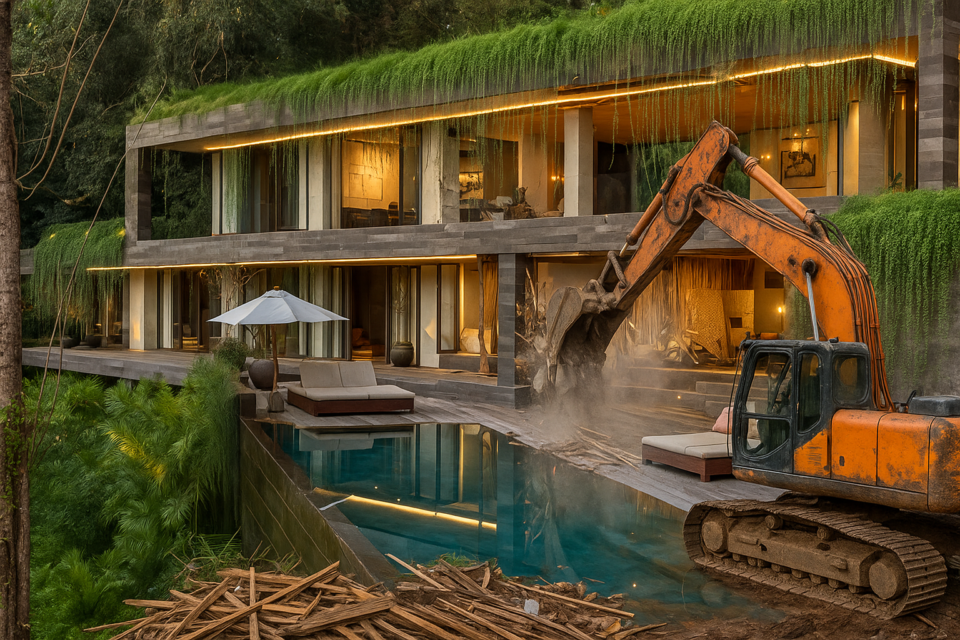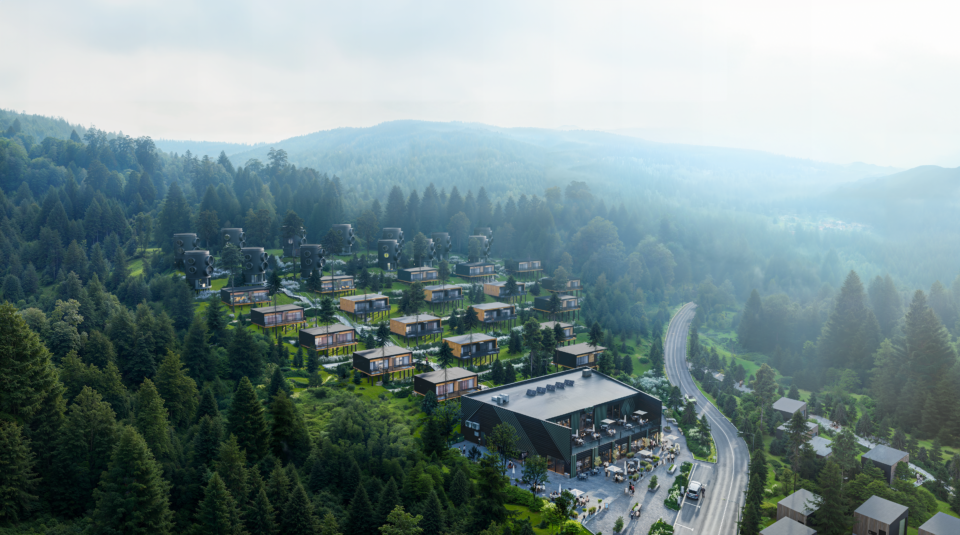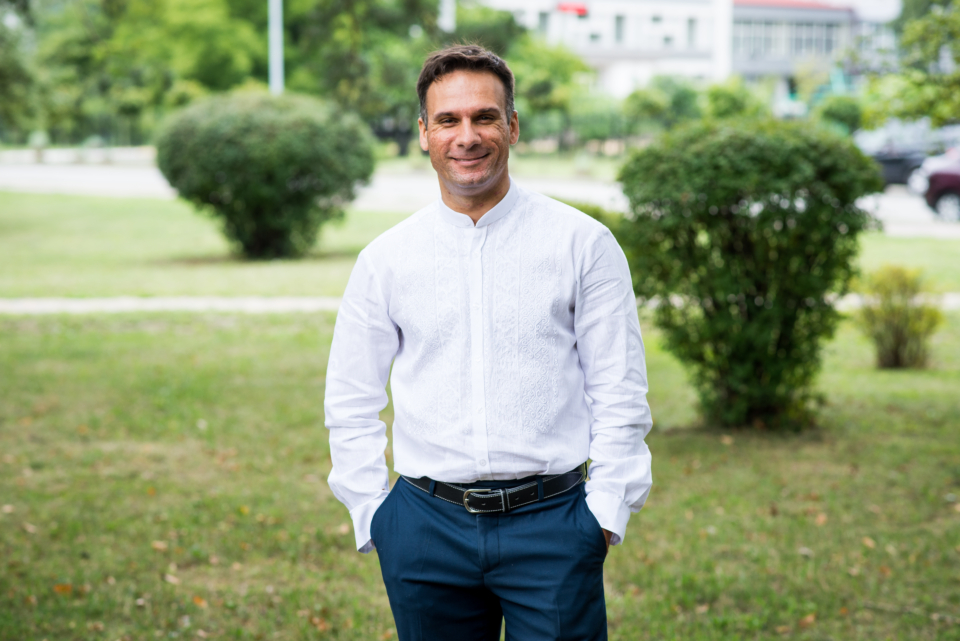Designing hotels and spaces: «the сity is a living organism»
Ukraine is the best country for a young architect. Did you expect?
Vitaly Schwarzwalder, founder of the IMLA architects architectural Studio, believes that our country is perfect for a young specialist.
These are not just big words. In collaboration with the management company Ribas Hotels Group, the Studio team managed to design several bright projects that are already loved by tourists and have ratings on Booking.com above 9 points.
We talked with Vitaly about hotels, relationships with customers, ukrainian and foreign realities, and inconvenient topics like kickbacks, questionable architecture, non-compliance with construction standards in the city and in the country as a whole.
— As a rule, University graduates or young professionals complain that there is no place for young creative potential to develop in Ukraine.
— Ukraine is the best country for a young architect. Yes, you heard me right.
We periodically go abroad to exhibitions, forums, seminars and communicate with local specialists. So, young architects have the opportunity to design mostly private houses or apartments. For other objects, you need a lot of experience, a large number of documents, and a huge credit of trust.
At one of the international events, we met a girl from the Netherlands. She is the daughter of a banker and lives in a huge Villa. But in two years I was able to get several orders for private homes, despite quite large connections and financial opportunities. And this situation is typical.
The vast majority of teams that we meet at architectural gatherings have completed one project per year. We have designed 18 buildings over the past year. 4 of them have already been implemented. We are currently working on the fifth one.
Older foreign architects have a really huge experience and it is useless to compete with them, since you need to first get such a baggage of knowledge and skills in order to receive commercial orders.
In our country, the main thing is that customers have money and trust. That’s all.
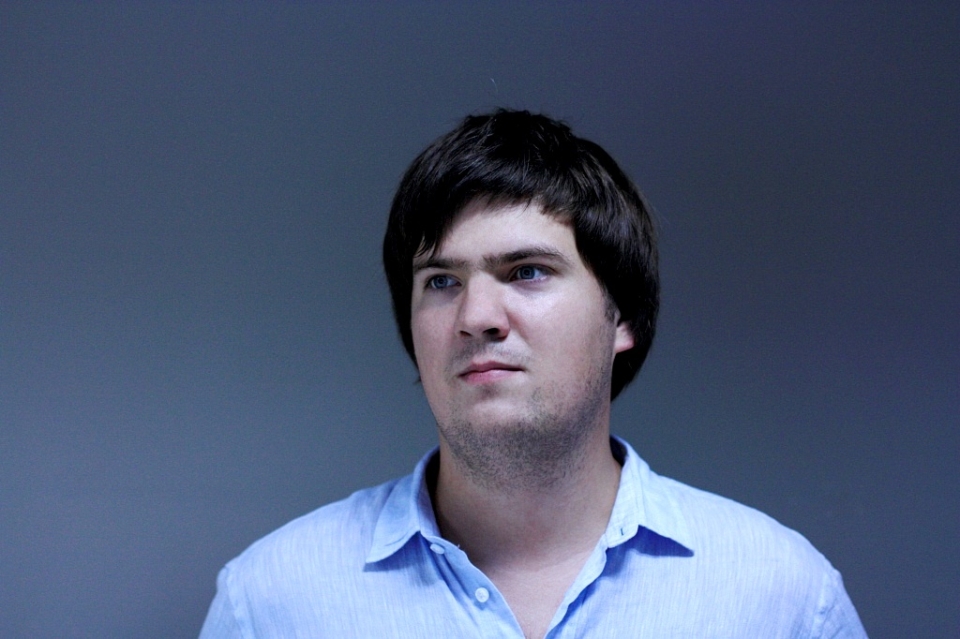
— A good architect is typically being chosen based on reviews, isn’t it?
— Yes. I admit that this is how I was recommended to the owner of Ribas Hotels Group, Artur Lupashko. But I think this approach is not very correct. You need to determine according to your own taste whether a person is suitable for you, their perception of the world and space. A project is a collaboration between a client and an architect. They should be able to hear each other. The customer contributes their mood, vision, budget. At the same time, it is absolutely impossible to allow the first person to say: “we have, of course, a different image, but let’s repaint it in green, and then remove the wall and put the TV on it.” Only with full trust and mutual understanding will the result be truly impressive.
For example, we have a trusted relationship with the owner of the Bortoli city hotel. Despite the fact that he did not understand some of the nuances: how to put tiles in co-working, why this particular shade of color should be used, etc. But he completely trusted my team and let us implement the project in the form in which we conceived it. And today Bortoli is not only his pride, but also ours.
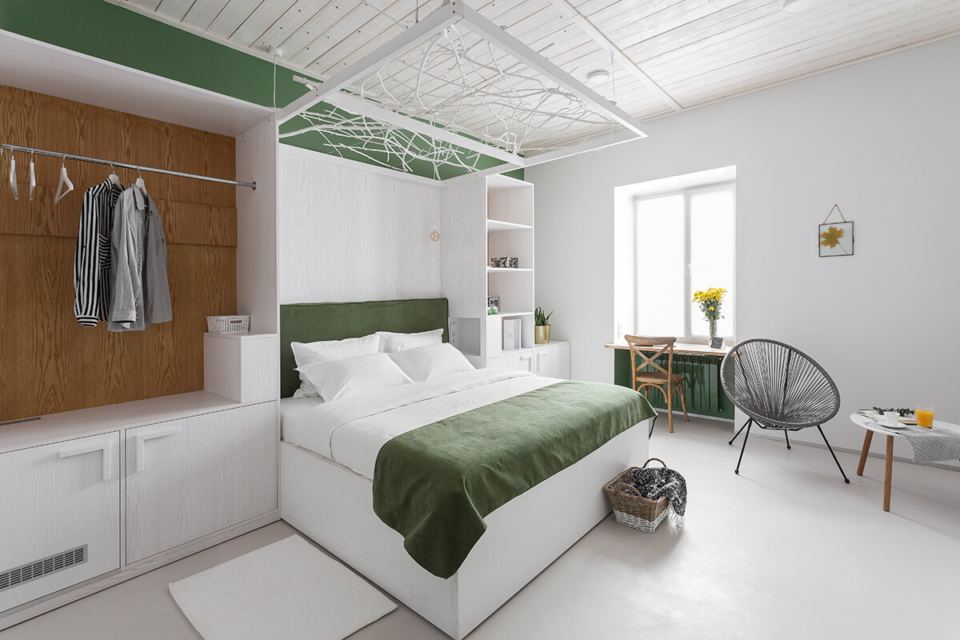
The most pleasant thing that this owner said to us after the project was completed: “Previous architects agreed to the first request to redo something, to move away from the original version of visualization, but you showed character. And I’m very happy about it.”
— And if the client is objectively wrong, but stubbornly stands on his own?
— Different situations require different approaches. Someone needs to argue gently, someone just needs to give objective arguments, someone needs to speak harshly.
The architect must also understand that the client can suggest what is best. Especially if it concerns the design of a private house. No one is more accurate than the customer himself will say in what environment he will be comfortable. In such cases, you need to find common ground, make concessions, involve a third party, and show examples of worthy projects. So far, I’ve managed to convince all my clients that I’m right.
I prove to them that often an architect has a picture worked out in his head that computer visualization, no matter how good, is not able to convey to the end. The specialist just sees this final result.
And the client, most often, does not have a very good spatial imagination. And he is very afraid not to see and understand this complete image. Sometimes I bring samples of finishing materials along with the visualization, so that people understand that the texture may not be visible in the picture, but in fact it is very beautiful and original.
— I assume that in order to design a project that the customer will like, you need to be a little bit of a psychologist.
— Yes. We recently had a customer. He had a clear idea of what kind of house he wanted: what style, what size, what decor. The more we designed and communicated, the more his opinion changed.
For example, I asked him why do I need a second row of chairs on the terrace on the second floor? After all, on the first floor – there is a kitchen with a dining room, it has access to the terrace, next to a large cozy gazebo. What is the probability that one of the guests will ever reach the second floor? The client admitted that, in principle, he did not intend to take guests there.
Or a case like this: the client wanted a Victorian-style house. He showed us examples from the Internet of what he wants, and gave us all the sizes. We designed and it turned out that the building should be about three hundred square meters. Not only will this entail a luxury tax, but the customer himself realized that he simply does not need such an area. During the next conversation, we significantly reduced the area of the house.
Each of us has a developed imagination that we want to use to implement creative ideas. But when the customer answers our questions, he understands that he will not use what he has imagined: he won’t have time to keep track of cleanliness and order, he does not need multi-tiered lighting, wrought-iron furniture, and more. If the environment will contain carpets, fabrics, sofas, and the owner of the house doesn’t have a housekeeper, works 10 hours a day and comes home just to spend the night — he simply does not need this interior. From this, we conclude that the style of his housing should be functional and modern.
When fantasy is imposed on circumstances, limiting factors are identified that give the most accurate answer: what should be the housing.
— Vitaly, you travel a lot. I suspect that you notice mistakes in the projects and design of hotels. What is included in your personal top mistakes?
— Many hotels have just the style of a pretentious hotel: expensive materials, plumbing. Nothing more. Without an emotional component, this does not give any interaction with the guest. It’s expensive for the sake of being expensive. For chain hotels, this can be either good or bad, depending on the location.
Many hotels have no architecture at all. The customer chose the color, texture, location of furniture or different departments. And often it can look quite nice, because it is invested with love and a part of the human soul. In fact, in most cases, this is an ill-conceived design, without a competent location of engineering networks, which assume economy and ergonomics. Often, this is not very convenient to use, since the practical component is completely absent. For example, beds, doors, and plumbing purchased for an apartment are not suitable for a hotel.
— You often have to correct the mistakes of other architects. How is it possible that people in the same profession do diametrically opposite things in terms of space efficiency? Is it the influence of different architectural schools? Or is this situation caused by something else?
— It’s very simple. Many architects work directly with construction firms. For example, on one of our sites, an architectural organization that was engaged in construction together with the developer made projections on the facade. These projections were due to the fact that you have to pay more money for running shoes which make the formwork, as each ledge was worth the extra money.
This principle of cooperation is based on charging the client more money for construction, in order to get the maximum kickbacks from the purchase of furniture, paint, materials.
I see that our studio lives on projects. This is our strict position. At first, even my employees wondered why we didn’t follow the “beaten path”.
I would like to note that a small part of our colleagues also exist through the implementation of local and national projects.
— What would you recommend to hoteliers who are planning to build a hotel or other object?
— Identify a good studio. It’s not that hard.
First of all, it is better to look for a company that is not associated with a construction company. Otherwise, most likely, their sphere of interest will include getting the maximum dividends from construction.
Secondly, the age of employees of such a studio should not exceed forty years.
— It’s hard to believe that age is also a criterion of choice in this sphere.
— Just look around. Until the eighties, architects diligently studied and built soviet style buildings. So called “khrushchevki”.
In the 90’s-they designed the space “in a rich way”: “under the gold”, with monograms, multi-layered curtains, carpets. By the way, then the rollback system was in peak.
The generation that studied after them traveled a lot and saw what was happening in Europe, the USA, and Japan. The Internet and the ability to see how things are being done in other developing countries have become ubiquitous. Many were educated there or went to training courses.
Back to your question. Yes, it so happens that age is also a criterion here. Not because an older person is bad. It’s just that during certain periods, architects were forced to work in a professional sense not in the best conditions.
I also advise you to look at completed projects. Every self-respecting architect has a portfolio and a modern website. Even in the name of the studio, the style should be traced, because if the company does not pay attention to this, it means that they are missing out on other important details.
— There is a hotel in Barcelona designed by Ricardo Bofil. When he arrived to the beach, he was so inspired by the beautiful view that he decided that there should be a sail on the coast. And designed the hotel in the form of a sail. Can we say that Ukrainian hotels lack this desire to withstand the architectural ensemble of the city or coastal areas?
— Yes. There are several reasons why this happens to our hotels. First, there is a huge difference in funding. Any construction project abroad is much better funded. And there is a huge selection of materials, furniture and design solutions. Compared to our own-the choice is simply limitless. Even a not very good project, due to high-quality construction and materials, can be put into operation in Germany without a doubt. He will definitely find his guests. In our country, if the project is poor quality, then the construction will finish it completely.
You also need to be able to fit the building into the landscape or city canvas. Most teachers teach architects to draw an image. In other words, draw a plan without any reference to neighboring buildings, to the style, to the forms. A lot of attention is paid to drawings, but architecture is much less.
To do things right, first you need to prepare a model with nearby buildings, take photos of the block, street, to understand what kind of ensemble we get. Only then do we start designing for our own volumes. This way you can fit the object perfectly. And how to enter it, if you don’t even try to do it?
— Why don’t they try?
— For old-school studios, this is an additional expense that the client does not pay for. But this is a huge layer of work: you need to make a model of the building and convince the customer that it is necessary to spend time on it. And the client needed everything yesterday. From a financial point of view, it is absolutely unprofitable.
But many people do not care what their city will look like. They have one concern — to quickly make and get their money. You can understand them, too. In Ukraine, the work of an architect is paid extremely low. In Europe, an architectural Studio can get about ten percent of the construction amount. And the price of the project is not the same as in Ukraine.
— Which hotel would you like to design for yourself?
— I would buy a large old building in the center of Odessa. I would restore everything in it as much as possible. If something in it was destroyed, it would be delicately restored. These would not be five-story superstructures made of metal and glass. The restoration should look as authentic as possible.
In our country, quite often, when restoring an old building, they paint it in bright colors. Abroad, paint is artificially “aged” everywhere, and dust is painted in some places to make it look as if the building has stood like this for a hundred years and is very well preserved. You can’t make it look like a century-old building was built yesterday. This is wrong.
You can also not put plastic windows in old buildings. This also looks pathetic.
Our Studio does not design in this style, because, in my opinion, it will be a fake. It was created by people who lived at that time, who had a certain way of life. Even if it is very realistic to repeat it now, it will still be a fake.
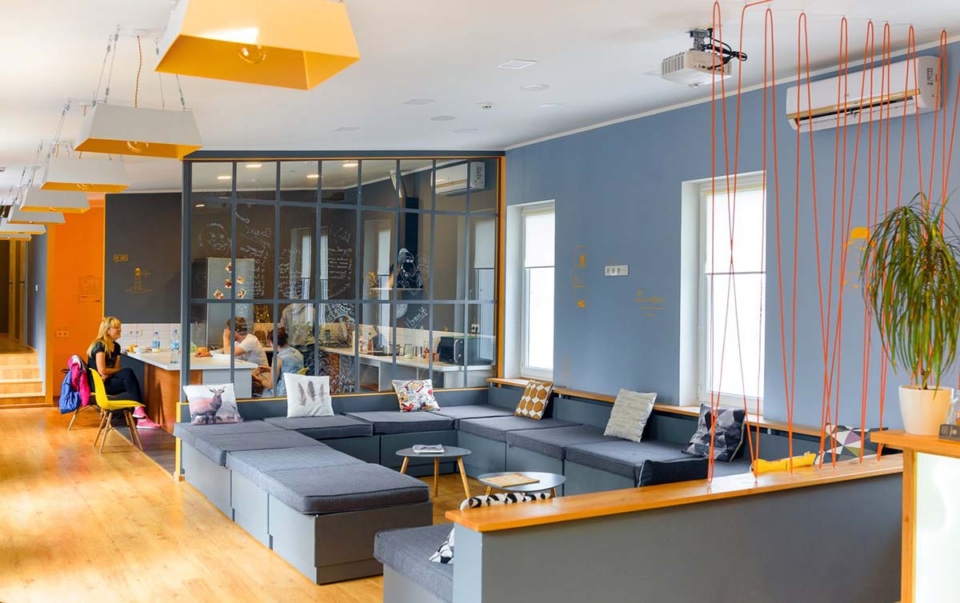
— Does unexpected hotel architecture work as a means of attracting guests, in your opinion?
— I think it attracts customers. But for once. To see what it is. But from the point of view of functionality there are big issues. This can hardly be called architecture, to be honest.
Mark Vitruvius also wrote that the main components of architecture are utility, strength, and beauty. If you translate it into modern language, it means functionality, reliability and aesthetic design. If a building doesn’t meet these parameters, it’s not architecture. When the shape of a building is non-standard, convex, it is extremely inconvenient even for placing furniture. Most often, the walls are straight inside and round outside. There are voids in space that money is spent on.
In addition, more than seven billion people live on earth and it is irrational to waste space, to put it mildly. In architecture, everything must come from the form that is inside.
If we are talking about the construction and design of a hotel, then everything in it should be thought out in such a way that it is most useful to use the number of rooms, not a single millimeter of which is wasted. Because you have to pay for every millimeter. This includes the price of land, construction, and maintenance. This, of course, should be beautiful. But beauty can be achieved in other ways, without resorting to dubious architecture. And if the hotel is beautiful and comfortable, it is much more likely that it will attract guests for a longer period of time.
— In the architectural environment, as in any other creative field, it is customary to follow trends. What do you think about this?
— I always rely on what is functional, correct, and high-quality. Now the vast majority of designers have moved from a gray, dark, cold loft to softer accents.
We knew that the loft and other trends would get bored sooner or later, so we never blindly followed fashion. We designed something that will look stylish in five or 10 years.
— Vitaly, how do you see the architecture of Ukrainian cities in the long term?
— There is a growing trend. Now they will point-by-point review areas that were not very cleverly built up in order to embed the new in the old canvas.
A city is a living organism. And you can’t build up the area indefinitely. First, it will create an inconvenient infrastructure, a shaken ecological system, tangled engineering networks, and kilometers of wires and pipes. I don’t think there will be any cars flying on air roads. Cities will grow not in breadth, but in height. In other words, architects optimize the space they have at their disposal. This should be done carefully and correctly: observing the proportions of old buildings, erect new structures, hiding cars in underground parking lots.





